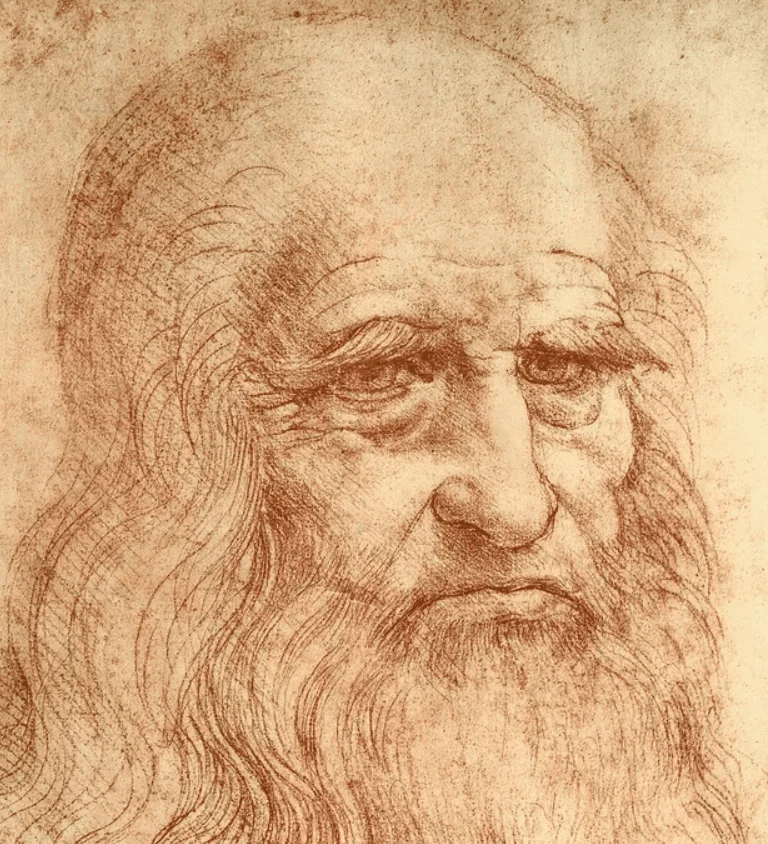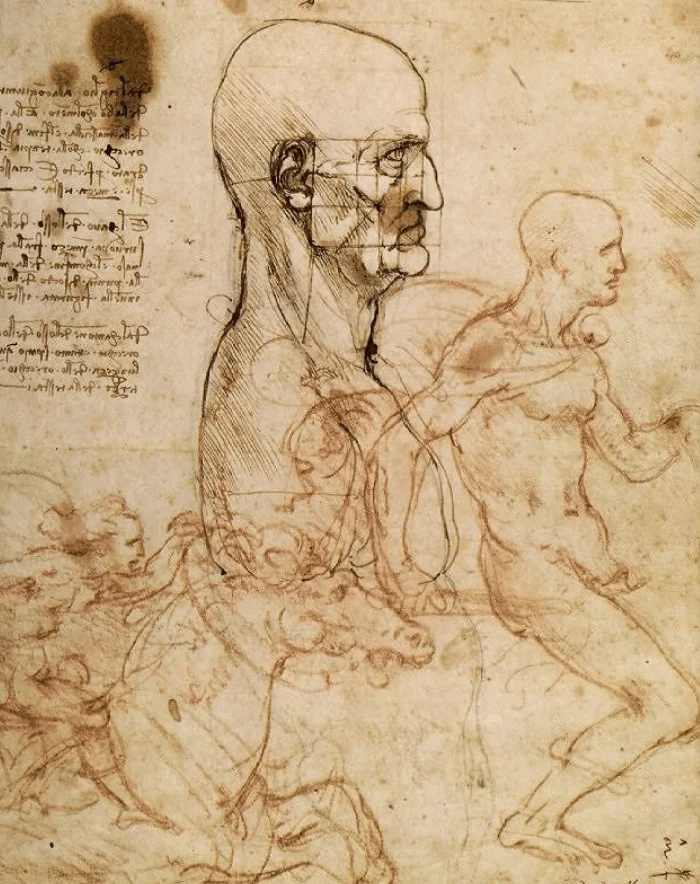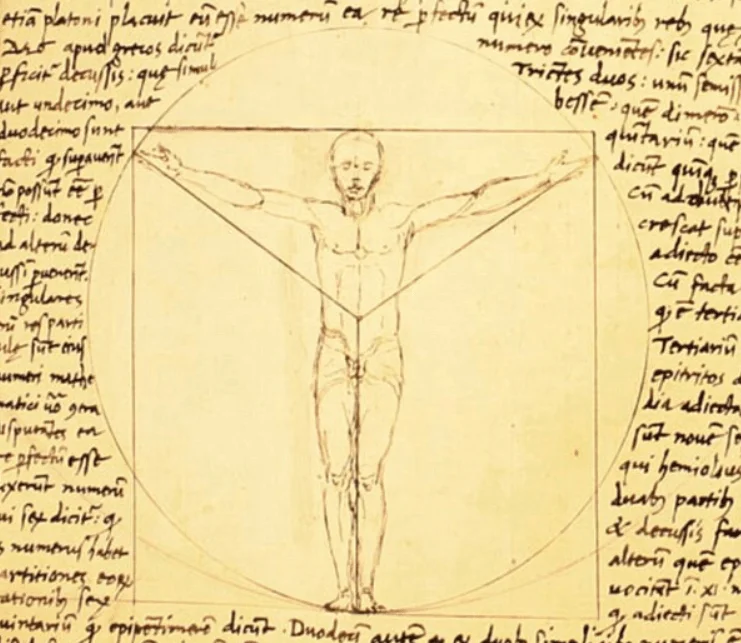Very few people will come close to the talent of Leonardo da Vinci. Apart from being a famous painter, he was also one of the best sculptors, engineers, architects, inventors, and a whole lot more. It’s fair to conclude that this Italian polymath embodied what is referred to as the “Renaissance Man.”
This drawing pretty much emphasizes his deeper quest for knowledge and understanding and in this famous work, the subject is the proportion of the human body. Let’s check out some interesting facts about the Vitruvian Man.
1. The drawing’s meaning is in its original title
The Vitruvian Man was originally referred to as “Le proporzioni del corpo umano secondo Vitruvio.” This literally translates to “The proportions of the human body according to Vitruvius.”
Vitruvius was an Ancient Roman architect and author and da Vinci’s drawing was based on his notes on the ideal proportions of the human body.
2. It’s one of Leonardo da Vinci’s most famous works
This drawing has become one of the most iconic drawings ever created and literally turned into a cultural icon. This is definitely not something that da Vinci intended as well, making it all the more fascinating. He made the drawing to enhance his knowledge about the proportions of the human body.
It’s fair to conclude that it’s in the same league as some of his other famous works such as the “Mona Lisa” and “The Last Supper.”
3. It was created when da Vinci was in his 30’s
Da Vinci was born in April of the year 1452 and it’s believed that this drawing made around the year 1490. This means that Leonardo was in his late 30’s when he made this pen and ink sketch.
The only depictions we have of him (if these are really him) show him as an aging man with a long beard. He was most probably still a young and vibrant man at the time he made this drawing.

4. This world-famous work is a rather small drawing
The drawing was made on a paper with dimensions of 34.6 × 25.5 centimeters (13.6 × 10.0 inches).
5. It’s based on a Roman work called “De Architectura”

Above and below the drawing da Vinci made notes referring to Vitruvius, the Roman architect who created the template for the Vitruvian Man. He added the description that da Vinci used and the dimension of the ideal body proportions in his manual for Roman architects called “De Architectura.”
This work was written in the first century BC and presented to the first Emperor of Rome, Caesar Augustus. This book has been referred to as the “first book on architectural theory.”
6. The idea was to fit a human in a circle and in a square
The description in De Architectura mentions that the perfect form of the human body could “be made to fit inside a circle and could be made to fit inside a square.”
7. The notes were written in mirror writing
The note above the drawing is a reference to Vitruvius and reads:
Vetruvio, architect, puts in his work on architecture that the measurements of man are in nature distributed in this manner: that is a palm is four fingers, a foot is four palms, a cubit is six palms, four cubits make a man, a pace is four cubits, a man is 24 palms and these measurements are in his buildings. If you open your legs enough that your head is lowered by one-fourteenth of your height and raise your hands enough that your extended fingers touch the line of the top of your head, know that the centre of the extended limbs will be the navel, and the space between the legs will be an equilateral triangle.
Note above the Vitruvian Man.
The note below the drawing reads:
The length of the outspread arms is equal to the height of a man; from the hairline to the bottom of the chin is one-tenth of the height of a man; from below the chin to the top of the head is one-eighth of the height of a man; from above the chest to the top of the head is one-sixth of the height of a man; from above the chest to the hairline is one-seventh of the height of a man. The maximum width of the shoulders is a quarter of the height of a man; from the breasts to the top of the head is a quarter of the height of a man; the distance from the elbow to the tip of the hand is a quarter of the height of a man; the distance from the elbow to the armpit is one-eighth of the height of a man; the length of the hand is one-tenth of the height of a man; the root of the penis is at half the height of a man; the foot is one-seventh of the height of a man; from below the foot to below the knee is a quarter of the height of a man; from below the knee to the root of the penis is a quarter of the height of a man; the distances from below the chin to the nose and the eyebrows and the hairline are equal to the ears and to one-third of the face.
Note below the Vitruvian Man.
One of the most remarkable facts about the Vitruvian Man is that it appears to be da Vinci experimenting to increase his knowledge about the ideal human body proportions.
If we look closely, we can also see that the notes were written in mirror writing, which means they were written backward and display correctly when holding them against a mirror.

8. The drawing has a much deeper meaning as well
Was the Vitruvian Man merely an experiment to try and get a better understanding of the ideal male body proportions? There’s definitely much more to it than that.
It has been mentioned that “He believed the workings of the human body to be an analogy for the workings of the universe.” In other words, he believed that the human body is just a reflection of the entire universe and a microcosm that works exactly the same.
9. Leonardo made his own version while drawing the Vitruvian Man
One of the most interesting facts about the Vitruvian Man is that Leonardo didn’t follow the dimensions written down by Vitruvius but actually did his own researching by measuring body proportions of men in Milan.
Because of this, he was able to fit the male body in both the circle and the square without using the Ancient Roman architect’s findings. Pretty astounding!
10. Was the drawing based on a dead man?
We don’t know the identity of the man that was depicted. Some have suggested that it might have been Leonardo himself. Another theory is that da Vinci might have used dead bodies to study the anatomical measurements and used a corpse as a model for this drawing.
To support this theory, lecturer Hutan Ashrafian claims that the Vitruvian Man actually had a lethal inguinal hernia. This means that it’s possible that the model for the drawing was a dead man and we actually know the cause of his death as well.
11. The Vitruvian Man is just one of many sketches in a series
If we have to be honest, then we must simply say that Leonardo da Vinci was a pretty sloppy and unorganized person. He probably had issues with concentrating as his incredible mind was wandering off from one great idea to the next.
That’s one of the reasons why he wasn’t as prolific in his life as some of his biggest rivals and contemporaries such as Michelangelo and Raphael.
This notion is illustrated by his notebooks in which he constantly scribbled and made little drawings to sharpen his technique and knowledge. That’s why the Vitruvian Man is merely one of the countless drawings related to the proportions of the human body.

12. The Vitruvian Man was found in da Vinci’s personal notebook
One of the most interesting facts about the Vitruvian Man, one of the most famous drawings in human history, is that it was just one of the hundreds of drawings that da Vinci made in his life, all kept in his personal notebooks.
We’re positive that if somebody would have told him that this particular drawing would become one of his most famous works, he would have never believed it!
13. He may have been influenced by an earlier drawing
Da Vinci wasn’t the first to discover the writings of Vitruvius, and he definitely wasn’t the first to try and prove that his claim that the perfect human body would fit in both a circle and square.
He actually had a friend who was an architect and knew all about Vitruvius. His name was Giacomo Andrea and it has been claimed that the two were like brothers. It’s hardly surprising then that da Vinci most probably got the idea from the prototype of the Vitruvian Man that Andrea drew earlier.

14. The drawing resurfaced in the early 19th century
Nothing is known about the drawing in the centuries following da Vinci’s death. It resurfaced in the early 19th century when it was bought from a man named Gaudenzio de’ Pagave by art enthusiast and painter Giuseppe Bossi.
He first mentioned it when he was commenting on da Vinci’s Last Supper painting in the year 1810. The following year he wrote a unique piece on the drawing called “Delle opinioni di Leonardo da Vinci intorno alla simmetria de’ Corpi Umani.”
15. The drawing is located in Venice
because of Bossi’s writings, the drawing gained attention, especially after Bossi passed away in the year 1815. It finally came on the radar of the Gallerie dell’Accademia in Venice, Italy, which purchased it and added it to its private collection in the year 1822.

16. You will have to be lucky to ever get a glimpse of it
Even though the drawing is kept at the Gallerie dell’Accademia in Venice, there is very little chance of you getting to see it. Just as most important works on paper, it’s not on public display and is kept securely in the “Gabinetto dei disegni e delle stampe” of the museum which isn’t open for the public.
It is displayed occasionally though for the public in special exhibition events. This was the case during a special Leonardo da Vinci event at the Louvre in Paris from October 24, 2019, to February 24, 2020.
17. It was almost deemed too fragile to travel
The da Vinci exhibition, which marked the 500th anniversary of the man’s death, was one of the largest of the artist in history. It almost didn’t feature one of his most famous drawings though because there were protests from a non-profit organization called “Italia Nostra” which fights for the protection of domestic art.
They didn’t manage to keep the drawing in Italy, but they did manage to ensure the drawing was handled with the utmost care. In order to travel to Paris, a maximum amount of light for the drawing to be exposed to was set, as well as giving it enough resting periods to ensure there wasn’t too much light exposure in general.
Right now, it’s back to a safe storage room and we’ll have to check the museum’s website to see when the drawing will be on public display again!

